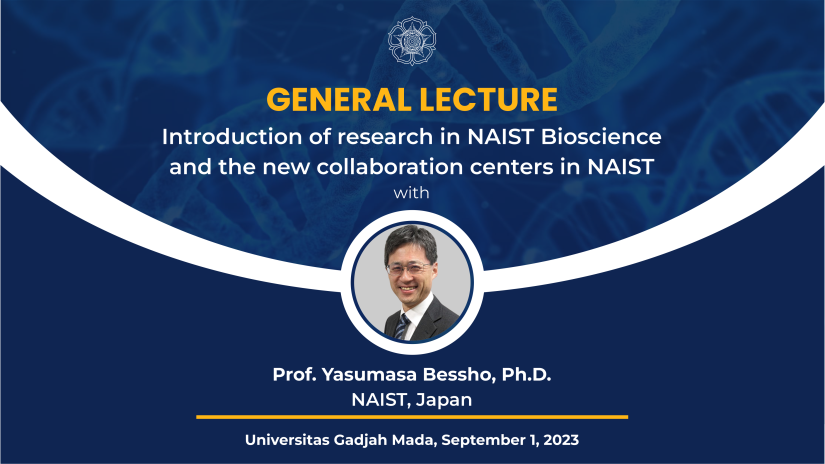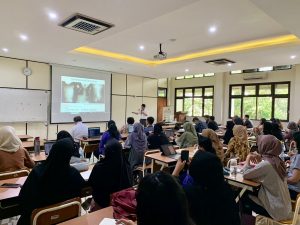
Biotechnology Study Program held a public lecture with speakers from NARA Institute of Science and Technology (NAIST) on September 1st, 2023 at 3rd floor, PAU Building UGM. Starting the public lecture meeting this time, Prof. Hisaji Maki as public relations explained the profile of NAIST to the students who attended the lecture. NAIST is a national university of Japan located in Kansai Science City, the border region between Nara, Osaka, and Kyoto. Founded in 1991, NAIST consists of schools in three integrated fields: information science, biological science, and materials science. In 2018, NAIST underwent an organizational transformation to continue research in these areas while promoting interdisciplinary research and education in traditional fields. With this new, one-of-a-kind school organization, NAIST strives forward with the goal of conducting cutting-edge research in cutting-edge fields and training students to become future leaders in science and technology.

The next material was delivered by one of the scientists from the Nara Institute of Science and Technology (NAIST), Japan, Prof. Yasumasa Bessho, M.D., Ph.D., explains the formation of organs in animals. This public lecture provides an overview of how Prof. Bessho’s research is carried out in his laboratory, using ‘life imaging’ technology, and about research using Zebrafish. He stated that using zebrafish as experimental animals has several advantages, including fast growth, easy to introduce genes, and the ability to produce the embryo is easy to observe. On this session, Prof. Bessho provides moving pictures of organ formation in zebrafish.

Zebrafish have cardiovascular, nervous, and digestive systems similar to those of mammals, and their skin is also similar to human skin. Organ formation in zebrafish is similar to other animals, including humans. Organs that can be formed from nervous tissue include the brain, ganglia and eyes. Zebrafish are a useful model organism for studying organ formation and function. Zebrafish are commonly used in research for drug testing and organ function observations, and their similarities to humans in genetics, anatomy, and physiology make them a valuable tool for studying human diseases and conditions. Organogenesis in zebrafish occurs after the gastrula stage, which is when the process of forming various body organs begins to perfect successively, such as the head, eyes, heart, and others. Zebrafish grow quickly in waters that have a temperature of 29 °C. Zebrafish is a freshwater fish that is widely used for biomedical research because of its transparent embryos and rapid organogenesis. Some physiological research that can be carried out on zebrafish includes research on mucus, research on heart development, heart electrophysiology, heart regeneration, kidney development and function, circadian rhythms, skin pigmentation, and research on eye physiology.
***
Author: Astriana Bhakti Utami
